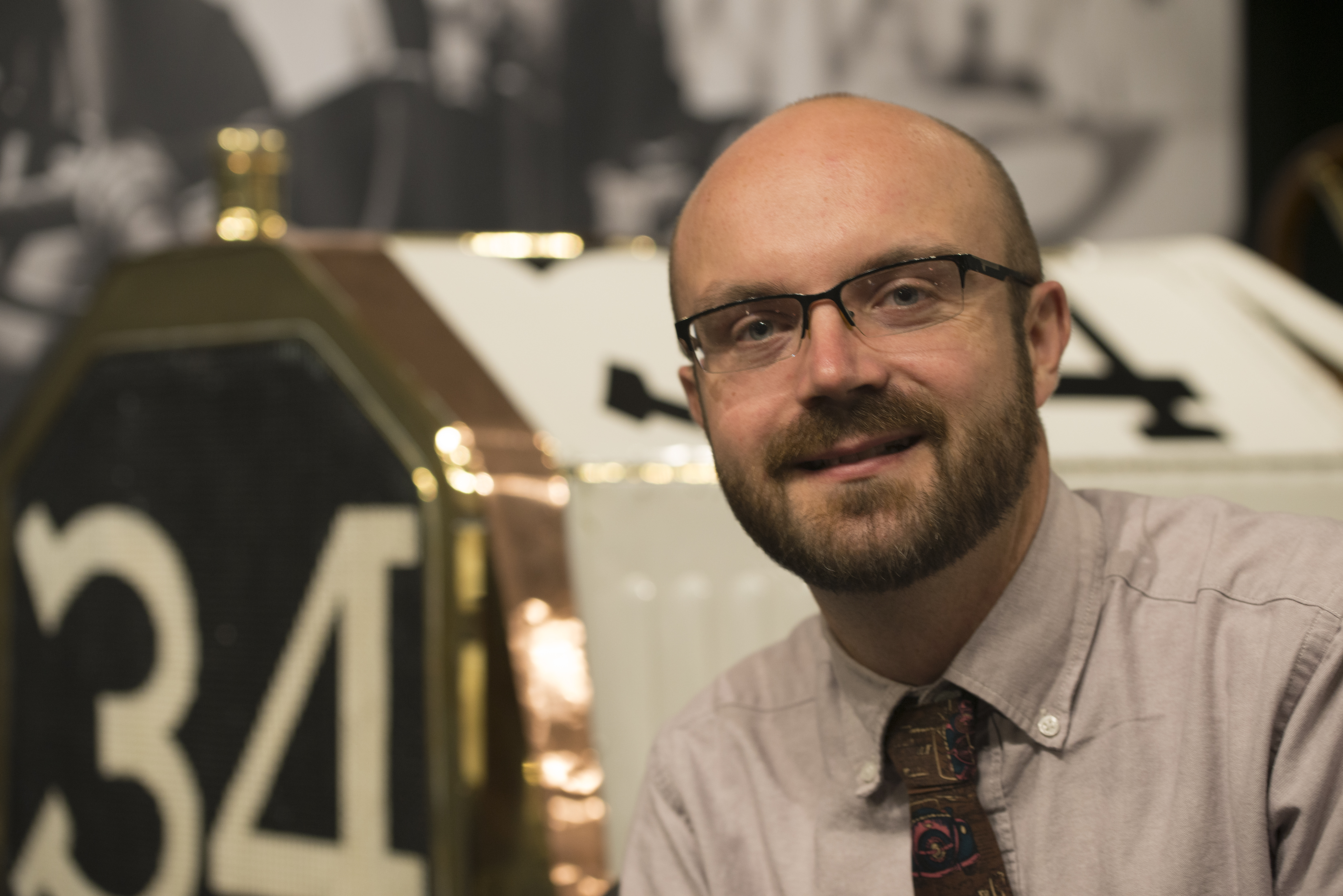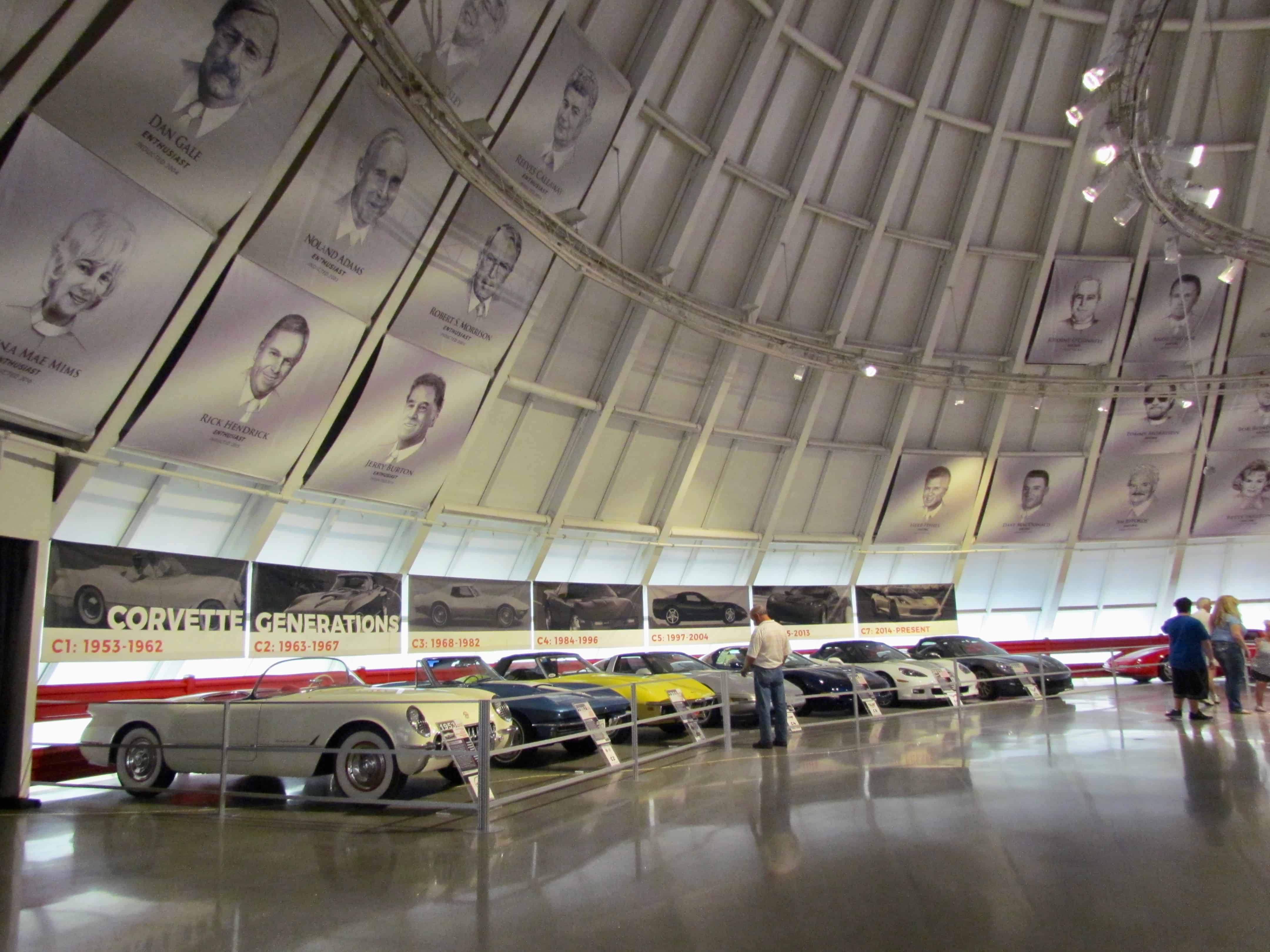Editor’s note: This is the third in a 6-part series examining where the collector car hobby is headed in the next decade and beyond. Read the rest of the series here. Derek E. Moore is the Curator of the National Corvette Museum, where he has launched a weekly live webcast. Prior to moving to Bowling Green, Kentucky, in 2017, he was the Frederick C. and Kathleen S. Crawford Curator of Transportation at the Western Reserve Historical Society in Cleveland, Ohio, and worked for six years at The Henry Ford museum. He studied automotive restoration at Washtenaw Community College in Michigan, has a degree in history from Eastern Michigan University and focused on museum studies at Central Michigan University. He serves on the historic vehicle standards committee for the Society of Automotive Engineers.

Automobile museums are a unique sector of the collector car hobby. We are home to some of the rarest and most historically significant automobiles produced, as well as some of the most common automobiles assembled during the roughly 132 years of automobile production to date.
Our collections and exhibits are an opportunity for students, families, hobbyists, and everyday visitors to learn about the impact of the automobile on society and culture, witness progressing technology in the automotive industry, see the rise and fall of thousands of automobile manufacturers in the United States, and (possibly the most important opportunity of all) recall memories and experiences with automobiles from their own past.
Although automobile museums offer all these opportunities and, truly, many more than what is listed above, we face many challenges along the way.
The greatest of these challenges, in my opinion, is relevance… our exhibits, the stories we tell, must in some way relate to our audience or we will no longer be relevant institutions within society. As years progress horseless carriages, brass era vehicles, and even cars of the classic era (Marmon, Duesenberg, Pierce-Arrow, etc.) are becoming novelties rather than memories. Novelties are still interesting to many visitors and there are still collectors of these vehicles that enjoy them, but most visitors have no connection to and no memories of these early vehicles. It is the museum’s job to interpret the importance of these vehicles to our visitors and relate them in a way that engages the visitor.
Engaging visitors is one of the most rapidly changing areas in the museum field today. Ever changing expectations of technology means that we can no longer be complacent with exhibits that contain only vehicles and exhibit labels. Handheld technology, interactive touchscreens, and advancements in image projection are changing our visitors interests and methods of learning. As technology becomes increasingly integrated into the everyday lives of upcoming generations, they will expect it to be utilized in every interaction they experience. This technological advancement has already forced major changes upon museums, from the largest to the smallest, and will only continue to mold our institutions in new ways within the next decade and well beyond.
During my time working at The Henry Ford in Dearborn, Michigan, the automotive exhibit was reimagined from what was Automobile in American Life to the current exhibit Driving America. Both fantastic exhibits, however, Driving America includes interactive touch screens and a completely new website dedicated to a digital experience related to the exhibit. This digital experience allows virtual visitors to explore digitized collections with deeper looks at the stories of vehicles and artifacts within the exhibit.
On the other side of the spectrum, my hometown history museum, the St. Charles Area Museum in St. Charles, Michigan, albeit not an automobile museum but a local history museum that includes an Aero Craft boat and Chessie System caboose, has taken to Facebook in an effort to share its stories and find an affordable means of utilizing technology to connect with a wider range of generations.
In my current roll as the Curator at the National Corvette Museum, we are embarking on an overhaul of the majority of exhibits within the Museum’s galleries. This would be no small task if we were only looking at the plans of what vehicles, small artifacts, and overall content we wanted to include within the exhibits, as may have been the case 20 years ago.
In today’s world though, and in the continuously advancing world of technology, we must also consider what interactive technology we want to include within exhibits to enhance the visitor experience. Adding in not only features that can be accessed by handheld devices visitors bring with them, but also interactive touch screens, as well as, enhanced graphics and experiences through projection will be key to ensuring we remain relevant to new generations of visitors to our museum.
I have heard it said, repeatedly, that museums are dusty, boring places with old stuff that no one wants anymore. I like to think, or at least hope, that automobile museums aren’t included in that sweeping statement, but if we are not careful over the next ten or so years, we may find ourselves quickly included. We, as museums, must embrace upcoming technology and the desires of our visitors to have experiences involving technology, to remain relevant in society, both today and in the future.
It is my belief, that within the next decade a visit to an automobile museum will be completely different from today. I am not saying that you won’t be able to walk through a museum and see vehicles on display with exhibit labels in front of them that tell you a portion of their story, rather, that as a visitor, you will have more opportunities using technology to explore those stories deeper than ever before. It will become your choice to dig deeper into a vehicles history if you want; the museum will allow the visitor to guide their experience as they desire.
I hope that everyone in the collector car community continues to support automobile museums around the country as we strive to remain relevant and be the home for the history of the vehicles and stories we are all so passionate about. It is only with the support of the community that we can continue to evolve, introduce new experiences through technology, and remain relevant in the technology-based world we live in today.
I encourage you all to visit your local automobile museum, be it big or small, and get involved, help them understand what you as a visitor want to experience, but don’t forget, not all visitors want the same experience, we must engage all our visitors to remain relevant.






The youngest two generations have seen the throw away concept of all products in the marketplace. They idea that whatever product you buy now, will have a limited use-life and then toss it out. We see it in cars– even wonderful old HOMES are torn down to be replaced with McMansions filled with plastic and cardboard furnishings. And these generations are OK with that! Antiques once valued as treasures are tossed out or offered FREE on the sidewalk! Our collector cars have become part of this current wave of thinking.
Check out the Automobile Driving Museum in El Segundo California They allow their guests to sit in and drive in their cars. There are no ropes separating any of the cars. Great cars great volunteers
One of the best auro museums we ever visited is the Packard Museum in Dayton, OH. Wonderful collection, reasonable price, and friendly and knowledgeable staff. A real gem. While on the same trip we took an extra day and went several hundred miles out of our way to visit the Studebaker Museum in South Bend. Unfortunately, the museum was having some sort of event the next day and was closed while they set up chairs or some such excuse. Not a good result and we’ll never be back.
For people who are interested in car museums, I recommend my book the Roadster Guide to America’s Classic Car Museums & Attractions. Let’s help keep these museums open.